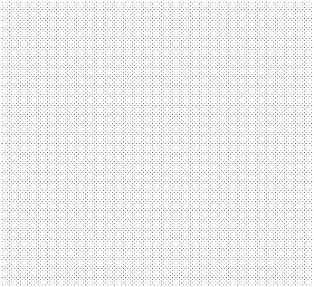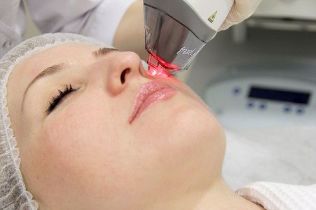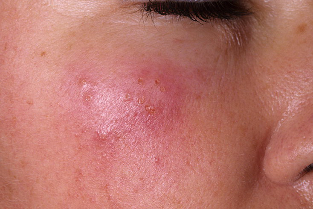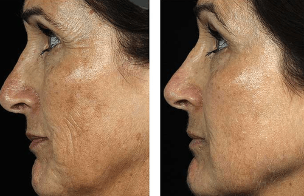Fraxel laser rejuvenation can solve many skin problems. The technology is already widespread and is almost displacing other laser devices for anti-aging procedures from the market. The secret of this popularity is that the fractional laser is safer than the traditional one.
What is Fraxel laser rejuvenation?

Fraxel technology was developed in the USA in 2004. At this point the possibility of rejuvenation with laser light was already known. However, the developers of the new method went even further: They changed the structure of the laser beam. Instead of a narrow beam of light, several hundred microbeams of different lengths were applied to the skin at the same time.A conventional laser heats the entire illuminated area, the fractionated laser acts selectively and burns trunk canals in the skin that are not wider than 0. 1 mm and 0. 4 to 1. 9 mm deep.With 1 cm2skin there can be up to several thousand such fractions - damaged areas alternate with intact ones. In the language of beauticians, the areas exposed to radiation are called microthermal treatment zones.
In contrast to other lasers with stump technology, Fraxel shines evenly through all micro-areas of the skin at a distance of hundredths of a millimeter.
There are several different fractional rejuvenation techniques because manufacturers have taken into account that people age differently - each type of aging has its own age-related changes. As a source, the technology developers took two types of lasers - erbium and thulium.
Erbium lasers act on the upper layers of the epidermis, more precisely on its lipid layer, in which water molecules collect and are retained - they absorb light energy. Under the influence of high temperatures, water evaporates and the dead cells that make up the top layer of skin are burned out by a laser. Such an aggressive effect immediately causes a protective reaction of the body - an increased metabolism, so that the damaged areas of the skin are restored as soon as possible. On average, microtrauma healing takes 1-2 weeks and full recovery takes up to 3-4 months. The procedure is known as ablation or ablative resurfacing. The skin becomes cleaner and lighter, pigment spots and keratomas disappear, fine wrinkles are eliminated. The first generation device with a wavelength of 1550 nm (penetrated shallow, up to 20-50 micrometers or 0. 02-0. 05 mm) was operated with an erbium laser. Then it became clear that even gentler technology was needed - for treating thin and sensitive skin around the eyes / lips. The wavelength was reduced to 1420 nm.
Thulium laser with a wavelength of 1927 nm is used to heat the upper layers of the dermis, in which the collagen-elastin network is located. The protein fibers that make it up change their structure through thermal action - they fold and condense. If you imagine them: they look like feathers - but with age, due to active facial expressions and under the influence of gravity, they lose their elasticity and straighten up. With the weakening of the collagen scaffold, the dermis first loses its tone, then sags and collects in folds, and the top layer of skin and folds appear. From the high temperature, they fold themselves back into feathers, so to speak, and over time pull the slack tissue up behind them. Some wrinkles, even deep ones, are smoothed out in this way. The thulium laser is not used separately for fractional rejuvenation. But its energy is effectively combined with that of an erbium laser.
By combining two types of exposure, manufacturers of laser devices have received the device - the gold standard of anti-aging cosmetology.
Fraxel laser radiation acts on all layers of the skin and therefore helps to solve a large number of age-related problems.
With the advent of high-power CO2 lasers, rejuvenating treatments have become even more effective. The light pulses in them are amplified because they are passed through the carbon dioxide molecules. This technology is used by a laser on which an ablative surface resurfacing is performed in addition to erbium. However, the energy of the CO2laser penetrates much deeper - up to 300 micrometers or 0. 3 mm. With this technology you can visibly improve the quality and texture of the skin: you improve the complexion, reduce pores, remove scars and stretch marks and smooth out wrinkles. A dermal optical thermolysis procedure is also carried out using a carbon dioxide laser when the radiation affects even deeper layers of the skin.
For fractional laser rejuvenation
Fractional laser rejuvenation is more in demand among women, although it is sometimes used by men too. The average age of the patients is 30-50 years, plus or minus five years up to the lower and upper limit. In fact, there are no strict age restrictions as to whether or not it is worthwhile to undergo rejuvenation with a fractional laser, a dermatologist-cosmetologist finds out during a preliminary examination. It's just that at a younger age the metabolism is already quite active, there are still no visible age-related changes, and you can use other, gentler methods to work with problematic skin. On the contrary, after 50 years, fractional rejuvenation can no longer lead to a noticeable result, since the tissue is quite severely deformed. A superficial correction will produce a short-term result and may not result at all.
If laser treatment is used:

- with enlarged pores and traces of acne;
- with unhealthy paleness, bad complexion;
- for superficial fine wrinkles;
- for hyperpigmentation and freckles;
- for scars and stretch marks.
Fractional thermolysis is indicated for wrinkles, creases and creases on the face, neck, décolleté, with loss of tone and sagging skin.
Women say that according to Fraxel, the skin looks 3-5 years younger than their age, although this is not the case for everyone.
Contraindications to the procedure
All procedures with a fractional laser are contraindicated:
- patients under 18 years of age;
- pregnant and breastfeeding women;
- cancer patients;
- people with heart and vascular diseases;
- diabetic;
- Allergy sufferers (a doctor should be warned of allergies to the laser itself or to anesthetics).
It is not recommended to expose yourself to the action of the laser if the skin in the area of the procedure is injured, inflamed, or covered with a rash, herpes, dermatitis or psoriasis.The procedure can only worsen existing problems, so the skin must be healthy. Relative contraindications for laser treatment / thermolysis - chemical peeling or facelift in the previous month. The possibility of fractional tapering in such cases should be discussed with a doctor.
Differences between the fractional laser process and other types
The possibility of rejuvenation with a fractional laser was discovered when similar procedures were performed with other lasers - thermolysis was performed on diode and neodymium lasers, the deep layers of the skin were heated, on erbium and carbon dioxide with a long wavelength a full laser renewal was performedcarried out. The result was both of one procedure and the other, but it had to wait too long. After grinding and surface treatment, the skin recovered for a month and a half - not all patients were satisfied with this time. In addition, the risk of side effects remained high. When the possibility of a metered supply of light energy appeared, the salons began to switch massively to new technologies - the fractional laser was used everywhere.
Even after an operation, significant changes occur in the tissue. To consolidate the result, you need to go to the beautician 3-4 times.
There are also new procedures:
- Carbon peeling. The top layer of skin is treated with a carbon gel (carbon gel), and then laser radiation is applied to it to warm up the deep layers of the dermis. The mechanism of action is generally standard - regeneration is more intense at high temperatures. Thanks to the laser, the gel penetrates deeply enough: Even after a session, the pores are cleared, the work of the sebum glands normalized, the face cleaner and smoother. The procedure is recommended for patients with oily skin.
- laser biorevitalization is a procedure that has replaced the injection technique. Gel with hyaluronic acid is applied to the problem area, then the skin is treated with a laser - usually a diode laser. With the discovery of the laser, it became clear that external agents can also penetrate deeper, which means that they can work more efficiently if the desired area is treated with laser light after application. This also happens with the hyaluronic acid molecules - if they are only superficially absorbed in an ordinary cream or gel and washed off after the first facial cleansing, after the laser they fall into the deep layers of the epidermis, where all the moisture necessary for the skin accumulates.
What are the advantages and disadvantages of the laser process - table
| Advantages | Disadvantages |
|
|
How to prepare for the procedure
Preparation for fractional rejuvenation begins with a consultation with a dermatologist. After the examination, he must give approval for the procedure and personal recommendations. Limitations usually concern:
- lifestyle. 3-4 weeks before the procedure, you should refuse to visit the solarium, and before going outside, use a cream with an SPF filter.
- are taking certain drugs - antibiotics, blood-thinning drugs that almost every second woman over 30 takes. But on the contrary, it is worth drinking drugs for herpes.
- cosmetic interventions. 2 weeks before the procedure, it is recommended not to perform any other facial cleansing and rejuvenation procedures. It is better to stop peeling at home too, so as not to damage the skin again, and switch to gentle care.

You have to come to the salon without makeup.
On the evening before and on the day of the session, it is advisable not to drink much so that tissue edema does not occur.
If there is a tendency to develop herpes, it is recommended to drink antiviral drugs while preparing for the procedure.
How is the procedure carried out in the salon?
Procedure for the procedure:
- The first thing a doctor does is disinfect the skin and apply an anesthetic. Anesthesia is usually sufficient.
- Next, a contact gel is applied, which is necessary so that the laser handle can slide more easily over the skin.
- Nozzles have different diameters: 7x7 mm or 15x15 mm. During an activation, 1–2 cm2of the skin are illuminated, so that the session takes only a little time. The treatment of the face and neck takes about half an hour and the hands about 10 minutes.
- Unpleasant sensations usually do not occur during the procedure, but afterwards, when the anesthesia wears off. When the skin is illuminated with a laser, it feels warm, burning and tingling, but tolerable. because the burning of microscopic areas is easier to perceive than when a directed beam burns out the top layer of the skin inch by inch.
What effect will occur after the procedure and when will it occur?
On the second or third day after the procedure, when the edema has subsided, a light dull tan appears on the skin, the tone becomes smoother and the complexion is refreshed. It takes about a month for the skin to recover. After this time, a lifting effect becomes noticeable, an improvement in the quality of the skin - that is, an increase in density, elasticity, a reduction in pores, a lightening of age spots.In order to consolidate the result, you need to perform 3-4 procedures at one month intervals.After another 3-4 months, when the collagen-elastin framework is restored, the face becomes even firmer, wrinkles disappear, the face looks 5 years younger or even more. If all the recommendations of the doctor are followed, this state can be maintained for several years. In salons, they avoid accurate predictions, as no antiaging procedure breaks the laws of aging.

According to the evaluations, the result can take up to 3-5 years. Longer is unlikely: irreversible age-related changes can only be slowed down, but then they recur and the course of treatment must be repeated.
Patient before and after fractional rejuvenation - photo
What complications can be and how can they be avoided?
Complications are possible even if the doctor fully observes the procedure. Whether or not this is the case depends on the patient's state of health and the individual's response to the procedure. The responsibility for performing fractional rejuvenation in the presence of contraindications lies with the patient - if he knew about it but did not warn the doctor or conceal important information about the illnesses suffered, the procedures performed and the allergy to drugs.
Almost 15 years of practice have shown that after a fractional rejuvenation there can be side effects, such as:
- acne;
- herpes;
- age spots;
- persistent reddening of the skin (erythema);
- persistent tissue edema.
No cases of keloid scars and tumors were registered.
Rehabilitation phase
Immediately after the procedure, patients experience pain and severe tissue edema. It is easier if you regularly apply a compress with ice (ice cubes wrapped in a napkin or a towel or a frozen bottle of water) to the treated area every 3-4 hours. You can go outside / work the next day, but it is better to wait at home for 2-3 days, make compresses and lubricate the skin with a tissue regeneration stimulator. No physical activity, sunbathing, or even a hot shower. Rest, warm shower, cream and compresses - for at least 2 days.
Then the skin heals - first dry crusts form, then they begin to peel off and fall off.You don't have to touch it, let alone tear it off.Alcohol-based cosmetics (lotions, tonics) for the recovery phase should be discarded. Decorative cosmetics are allowed 2-3 days after the procedure.
Reviews of Fractional Laser Facial Skin Rejuvenation
"Before the procedure itself, an anesthetic ointment is applied. The ointments are also different. I had the pain relief effects in 15 minutes. The procedure itself follows. The doctor first showed me the effect of the laser on a piece of paper. The holes are burned 1 mm apart. Then they burned me. . . The procedure lasted 15 minutes: face and neck. It's uncomfortable, but pretty bearable. Problems begin when the anesthetic ointment stops working. This is an elementary burn and the consequences are the same as those of a burn. The whole face became red, swollen, burned. Therefore, it is recommended to do the procedure on Friday evening. The doctor gave the following instructions: abundantly and often smear with ointment for burns. First, it is better to use an ointment that contains a cooling component. Also, moisten the face with cold water more often. On Saturday evening (one day) the severe redness disappeared somewhere, a lot of brown crusts formed on the burned areas, but the procedure is good, since on the second day you can use decorative cosmeticsOh and cover everything up. On the third day in the evening, you need to take a bath or go to the bathhouse. Massage the steamed face with your fingertips so that the crusts fall off. Do not use a scrub! The effect grows gradually. After the first procedure, the oval of the face was tightened, the vessels around the nose disappeared. For the full effect, the doctor prescribed 4 interventions per month with a break. Remember that Fraxel is easier for brunettes as it resembles sunburn. "
"I did a DOT laser rejuvenation. Day 1. The procedure is painful. I was anesthetized for an hour. But it still hurts. It smells like burnt flesh. Immediately after the procedure, the appearance is normal, justPuffy eyes. The face hurts for 2-3 hours. In the evening begins, as the milder expression, swelling . . . The appearance of a homeless woman from three wards. Day 2. In the morning there is horror! No pain. But the appearanceof a Tajik and a man. The skin darkens. The eyes narrow. The face is very puffy. In the evening, the eyes gradually open. Herpes 2 crawled on the lower lip. The doctor warned me that herpes, if it lives in the body, definitelySo he got out. Beauty is impossible. . . Day 3. No pain. Swelling is slowly subsiding. Scab on face. Looks scary. 4th day. The scab is gradually starting to disappear. There is no painen. The face is strange but not terrible. 5th day. The crust comes off. The face is pink, like after a bad sunburn. The skin is like a baby's. Eats everything that cannot be offered in large quantitiesAll creams, all masks under the broom. The lips healed. On the 9th day - eye candy! try me in the mirror, i can't see enough. The turgor is very different. Everything is smooth under the eyes (my most painful spot). Not a single fold. I don't know what will happen next. But for today, the 10th day, I'm VERY happy. "
"I was fortunate enough to become the owner of the most difficult to treat scars on my face. Namely, canceledand boxes. If someone doesn't know, these scars are characterized by sharp, ragged edges. 4 years ago I started this epic treatment of her. I was familiar with the variety of different methods and succumbed to the doctor's belief that fractional laser treatment was performed on the Dot device. By the way, the doctor promised to make me a perfectly smooth face in three procedures. I understood intellectually that this was impossible. After all, I have complex scars. But hope burned inside me. The day of the first procedure came. Oh God! It was painful as hell! The scorched skin smell was still gone. At home I had to sit for about a week without getting out of the car, smear my face endlessly with a tissue regeneration stimulator and be afraid of my reflection, because there they showed Kruegger in female form. After 6-7 days I already risked going out on people. The redness subsided, but the scars were there. To my surprise, my whole face became a tiny point hole. These were traces of laser. I was not expecting that! They promised perfect smoothness. And in the end they added irregularities. "Well, okay, " I thought and went to the second procedure. And then on the third. Personally, my eyes are blinded by such smoothness. In my opinion, nothing has changed! By the way, traces in the form of a grid from the laser are still with me. They aren't noticeable, but if you look carefully you can see them. I bring them out cleverly with ultrasound massage, mesoscooter and scrubs. And I'm no longer on Dot! It's absolutely goofy for my kind of scars! "
Fractional tapering certainly has many advantages. However, there are negative reviews from patients, there are cases when already one procedure caused health problems in people. This happened for various reasons, often due to contraindications for laser rejuvenation in principle. In order to protect yourself from possible negativity after the procedure, play it safe beforehand - go to the doctors, have yourself tested, listen not to one but to several beauticians. However, safety and health are two inseparable things.






































